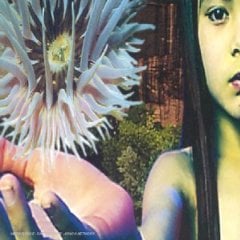/PAlogo_v2.gif) |
|
Post Reply 
|
Page <12 |
| Author | |
Blacksword 
Prog Reviewer 

Joined: June 22 2004 Location: England Status: Offline Points: 16130 |
 Posted: November 09 2006 at 08:17 Posted: November 09 2006 at 08:17 |
|
Piano!!
|
|
|
Ultimately bored by endless ecstasy!
|
|
 |
|
Dick Heath 
Special Collaborator 
Jazz-Rock Specialist Joined: April 19 2004 Location: England Status: Offline Points: 12798 |
 Posted: November 10 2006 at 09:36 Posted: November 10 2006 at 09:36 |
And before then you also had the Forte Piano - true.
|
|
|
The best eclectic music on the Web,8-11pm BST/GMT THURS.
CLICK ON: http://www.lborosu.org.uk/media/lcr/live.php Host by PA's Dick Heath. |
|
 |
|
Joolz 
Special Collaborator 
Honorary Collaborator Joined: March 24 2006 Location: United Kingdom Status: Offline Points: 1377 |
 Posted: November 10 2006 at 10:26 Posted: November 10 2006 at 10:26 |
|
FORTEPIANO [from the Wikipedia article]
ConstructionThe fortepiano has leather-covered hammers and thin, harpsichord-like strings. It has a much lighter case construction than the modern piano, and except for later examples, of the early nineteenth century (already evolving towards the modern piano), it has no metal frame or bracing. The action and hammers are lighter, giving rise to a much lighter touch, which in good fortepianos is also very responsive. The range of the fortepiano was about four octaves at the time of its invention and gradually increased. Mozart (1756-1791) wrote his piano music for instruments of about five octaves. The piano works of Beethoven (1770-1827) reflect a gradually expanding range; his last piano compositions are for an instrument of about six octaves. (The range of most modern pianos, attained in the 19th century, is 7⅓ octaves.) Fortepianos from the start had devices similar to the pedals of modern pianos; but these were not always pedals: sometimes hand stops or knee levers were used instead. The sound of the fortepianoLike the modern piano, the fortepiano can vary the sound volume of each note, depending on the player's touch. The tone of the fortepiano is quite different from that of the modern piano, being softer with less sustain. Sforzando accents tend to stand out more than on the modern piano, as they differ from softer notes in timbre as well as volume, and decay rapidly. Fortepianos also tend to have quite different tone quality in their different registers--noble and slightly buzzing in the bass, "tinkling" in the high treble, and more rounded (closest to the modern piano) in the mid range. In comparison, modern pianos are rather more uniform in sound through their range. HistoryCristoforiWhat we now call the fortepiano was invented by the harpsichord maker Bartolomeo Cristofori in Florence around the turn of the 18th century. The first reliable record of a fortepiano appears in the inventory of the Medici family (who were Cristofori's patrons), dated 1700. Cristofori continued to develop the instrument until the 1720's, the time from which the surviving three Cristofori instruments date. Cristofori is perhaps best admired today for his ingenious fortepiano action, which in some ways was more subtle and effective than that of many later instruments. However, other innovations were also needed to make the fortepiano possible. Merely attaching the Cristofori action to a harpsichord would have produced a very weak tone. Cristofori's instruments instead used thicker, tenser strings, mounted on a frame considerably more robust than that of contemporary harpsichords. As with all later pianos, in Cristofori's instruments the hammers struck more than one string at a time; Cristofori used pairs of strings throughout the range. Cristofori was also the first to incorporate a form of soft pedal into a piano (the mechanism by which the hammers are made to strike fewer than the maximum number of strings; Cristofori's was a hand stop). It is not clear whether the modern soft pedal descends directly from Cristofori's work or arose independently. |
|
 |
|
gong 
Forum Senior Member 
Joined: August 07 2006 Location: Neutral Zone Status: Offline Points: 366 |
 Posted: November 11 2006 at 02:28 Posted: November 11 2006 at 02:28 |
|
Organ, coz of Keith Jarret's "Hymns/Spheres" and "Invocations" (ECM)
|
|
 |
|
Post Reply 
|
Page <12 |
| Forum Jump | Forum Permissions  You cannot post new topics in this forum You cannot reply to topics in this forum You cannot delete your posts in this forum You cannot edit your posts in this forum You cannot create polls in this forum You cannot vote in polls in this forum |